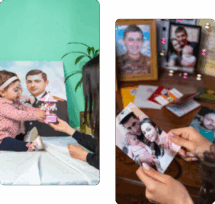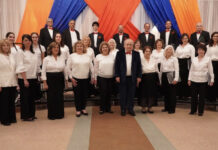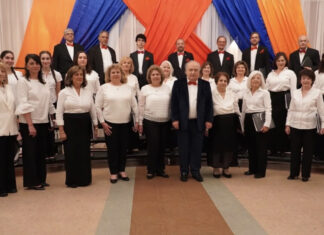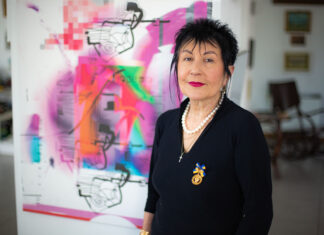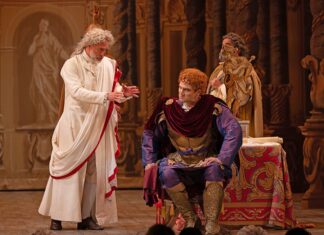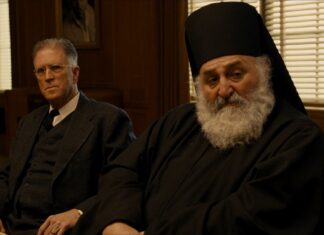To offer a first ever high school elective course that requires students to translate a hitherto untranslated 19-th century Armenian language satirical text into English while fully aware of the gap that exists between the potential audience for the translation and the original text, and to make the students fall in love with the task to boot, is nothing short of phenomenal. The newly published translation of Hagop Baronian’s Im Tseradedres (better known as Hosshosi Tseradedreh), My Ledger (Bread & Onions Press, 2024), credits the Rose and Alex Pilibos Armenian School students, who collectively performed the task, as translators and contributors, with their instructor Hratch Demiurge being hailed as head translator and editor. Included in the volume are a preface and an Introduction by Demiurge.
My Ledger chronicles the life of 1880’s Constantinople, then the capital of the Ottoman Empire, in a ledger/literary diary Baronian keeps during a six-month period — June 1, 1880 to November 30,1880 — to expose the corruption of government officials, the censorship of the press, the condition of schools and much more, all “as a spectator to the show without being involved in the performance.” The diary pokes fun at the incidents of theft that occurred in the metropolis on a daily basis. In the July 2 entry, for example, an officer and a Greek hurriedly enter the police station under the watchful eyes of a huge crowd assembled outside the station, and when it is confirmed that the officer was responsible for the theft, “There was a time when the police would arrest thieves, but now thieves arrest the police,” jokes Baronian.

More importantly, Baronian satirizes the Ottoman government’s internal policy with regard to Armenians. He caricatures the endless plans the Great European Powers draw to address the Armenian Question, which the Turkish government refuses to implement. At the same time, the satirist derides the stagnant state and the disunity of the Armenian church leaders who do nothing to address the issues. The Holy Patriarch does not show up at the Assembly meetings, yet he believes “the Armenian Question was not hopeless,” writes Baronian ironically. No one is spared.
Baronian’s accounts may at times be brutal but he is neither bitter nor contemptuous. If he exaggerates the wrongdoing it is to draw attention to the vices of his contemporaries who, in fact, contemplate the seriousness of the issues as they laugh. It is Baronian’s firm belief that “To laugh at vice presumes we are on the road to virtue, and, on that account, the more laughs I get, the less vice I’ll find.
If satire is about highlighting the vices in order to correct them then, by association, the course itself can be said to be a huge success. Indeed the class that came to be known as “Hratch class” gave the young scholars insights into their own contexts. They realized, for example, that “fun” need not be confined to, in contributor Mikael Hamladjian’s words, “superficial matters of no real importance, such as showing off wealth . . . many Armenians tend to focus more on.” They also saw the disunity and the stagnation that Baronian deplores in Armenian life and culture as “problems that plague our country and people” to this day.

Both Demiurge and his students are aware of the difficulty of reading satire without a knowledge of the topical issues. Generous footnotes are thus provided to explain the contemporary relevance of the matter in question. The fledgling translators do an excellent job of annotating the documents and of contextualizing the entries by providing the relevant cultural and historical references.
Most engaging is the Afterword to the book which sums up the students’ impressions of their experience of the course. Their comments evidence classroom discussions of an amazing openness. Students are aware, for example, that “some readers may feel judged or offended by the contents of the book.” They may also have been aware of their instructor’s occasional harsh judgments regarding the “moral high ground” and the “moral low ground.” Nonetheless, as translator Noy Hovaghimian’s reminds us, “It is important to engage in difficult conversations about the issues that divide us, and this book provides an excellent opportunity to do so.”
Working on the project helped everyone connect with Armenia’s cultural and historical background. “Learn[ing] more of the language as [they] translated” also contributed to the ongoing effort of preserving Western Armenian. A lengthy footnote on “an untranslatable pun” they encounter in the Armenian original, for example, betrays the students’ enthusiasm about their new awareness of the meanings of words and of the nuances of those meanings.
Demiurge is right to characterize his course as revolutionary. When student apathy is rampant, he makes learning fun. Students admit to actually appreciating working collaboratively, sharing resources and supporting one another. Sometimes “we spent days sitting and speaking to one another to see whose translation made more sense comedically and logically,” writes contributor Satenik Ghasabyan. “Despite the hard work we managed to have lots of fun (italics mine) throughout the translation process,” she adds. The young scholars’ passion for the project goes to show that by guiding properly and by creating relevance to their lives a teacher can motivate students to learn, no matter what the subject matter being taught. “I felt really proud when I started to understand Baronian,” writes Adriana Pembejian. “I am honored to have been tasked with translating these vignettes,” echoes Shant Melkonian.

Demiurge’s presentation of his book at the Armenian Arts Center in Glendale, at the book event organized by ABRIL bookstore, was much in the spirit of the whole undertaking, a match indeed for any hit comedy show. Photoshopping the twelve student translators’ group photograph projected overhead by adding a dinosaur here and a hat there to reveal the idiosyncrasies of each was hilariously funny and had the audience in stitches to the very end. Demiurge concluded his presentation by juxtaposing the Karakashian sisters, famed actresses of the Armenian theater in 1880’s Constantinople, with our own globally celebrated Kardashian sisters to show that, perhaps, “nothing has really changed.”
